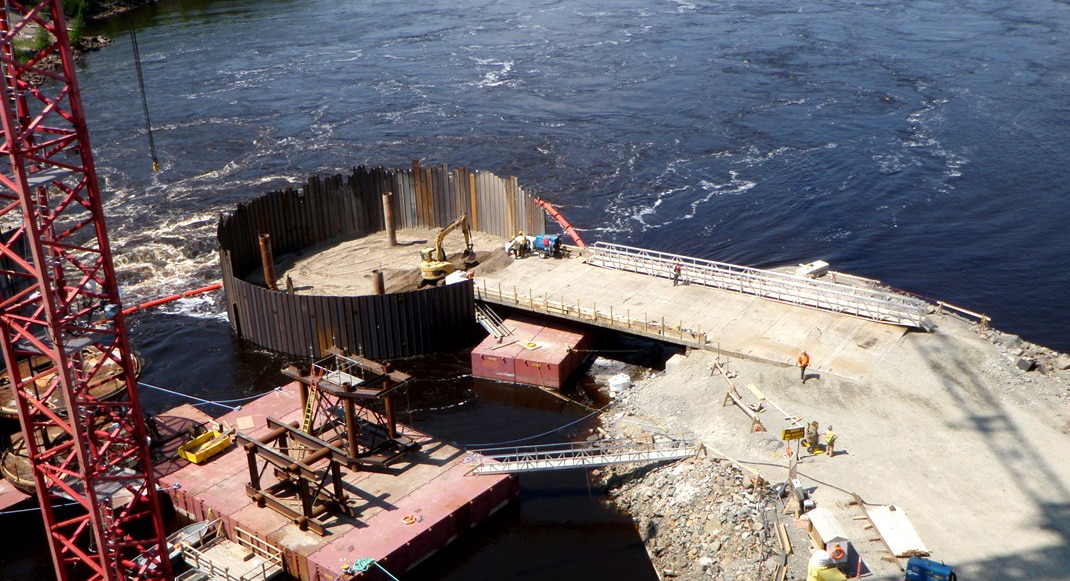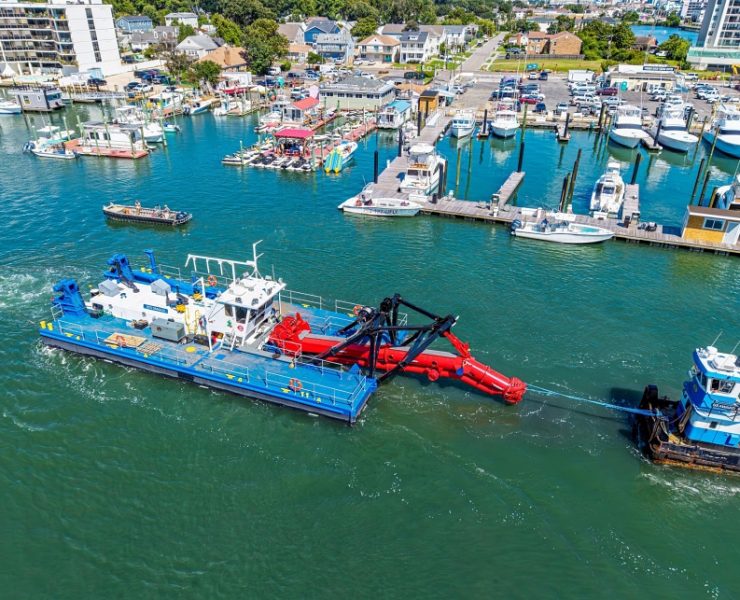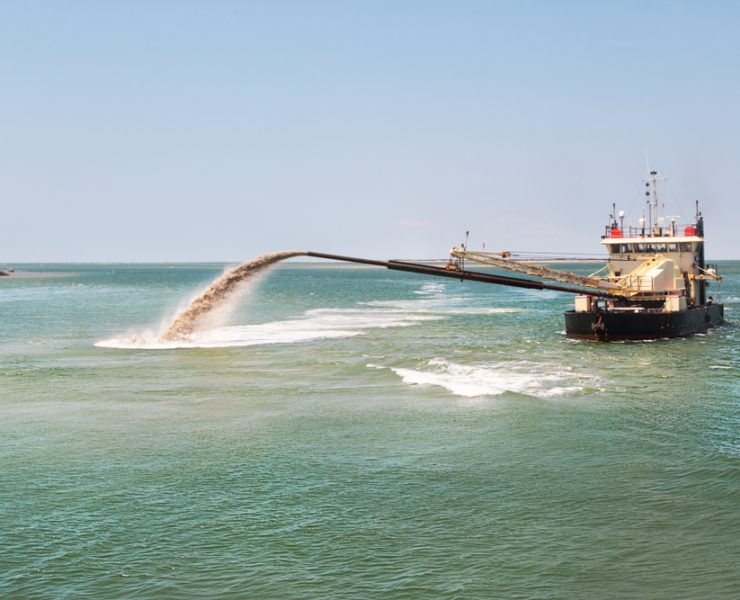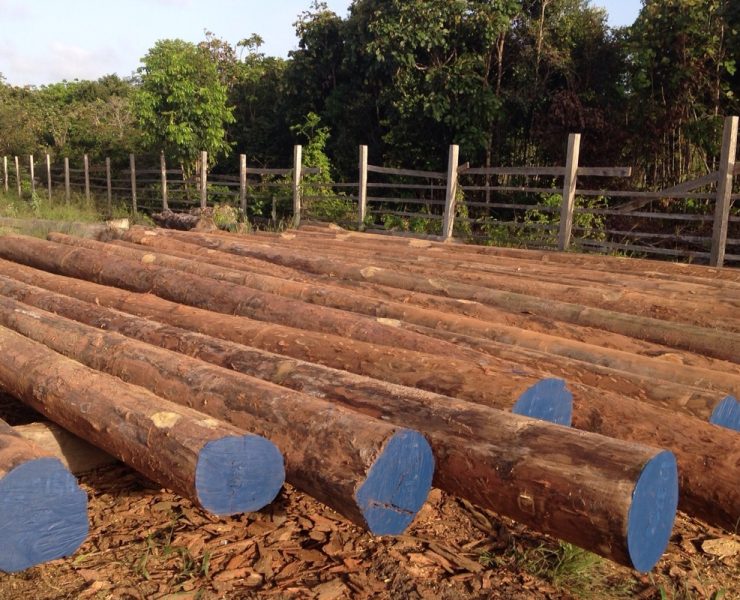Comparison of Anchored Combination Walls and Cellular Structures for Use as Bulkheads

by Richard J. Hartman, P.E., Ph.D.
Larger, deeper draft cargo ships are being constructed and they require that ports be built with higher bulkhead walls. There are two types of steel sheet piling walls most commonly used. One type is combination walls composed of alternating ‘’king piles” and one pair of sheet piling. These walls are typically restrained near the top and are classified as “anchored Walls”. They require tie rods, anchor walls, and numerous connections. The second type of bulkhead is cellular construction using circular sheet piling structures filled with sand and gravel. The cellular bulkheads depend only upon the tensile strength of the sheet piling and the weight of the sand and gravel fill.
This paper examines and compares the two types of walls for two different site conditions. Safety and Reliability are examined and discussed. Economic considerations are reviewed and comparisons of materials, labor, and total cost are presented. The paper provides designers and planners with information useful for selecting sheet piling structures for port facilities.
Larger, deeper draft cargo ships are now in service and new vessels are currently Under construction. These new ships require deeper water and, consequently, bulkheads for ports are required to be higher and deeper. In many cases, the bulkhead walls are sufficiently high that traditional sheet piling alone does not have adequate strength to resist the loads applied by soil, water, ship impact, seismic events, etc. This has resulted in extensive use of combination walls composed of “king piles” (typically W structural sections or pipe sections) and Z-shape piling. The walls are typically restrained at the top by a system of tie rods or concrete slabs and are considered to be “anchored” by the restraint system. A photograph in Figure 1 provides an example of a combination Wall during the construction phase. In this case, the wall is composed of W section king piles with one pair of Zshape sheet piling between two of the king piles. Also shown are tie rods that connect to an anchor not visible in the photograph. In the photograph, the tie rods are Connected to a steel wale, the horizontal member connected to the king piles.
In the past, cellular sheet piling structures were often used for bulkhead facilities. These structures consist of circular sheet piling cells filled with granular soil, usually sand or gravel.
The cells are connected by circular arcs so that the structure forms a continuous wall. In contrast to the anchored walls, cellular structures obtain their strength and stability from the mass and strength of the sand and gravel fill. The cellular structures are Robust and stable because they consist of only two primary components (sheet piling and granular fill) and their strength and stability depend only upon the mass of the fill and tensile strength of the sheet piling. The photograph in Figure 2 provides an example of a sheet piling cell shown during the construction phase. After the sheet piling is driven to form a circular cell, the circle is filled with sand and gravel.
In the following sections, anchored walls and cellular structures are compared for two different situations typical of port construction. The first situation considers a wall 46 feet high with a water depth of 33 feet. The second situation considers a wall 64 feet high with a water depth of 48 feet. Safety and economic considerations of the two systems are discussed.
–
BULKHEAD WITH DREDGE ELEVATION -33 FEET
The first example is a combination wall restrained by a traditional tie rod and sheet pile anchor system as shown in Figure 3. The most important features of this system are:
1. The primary wall consists of pipe, 54 inch outside diameter and 0.44 inch wall thickness, and Z-shape sheet piling resulting in a composite section modulus of 104.1 in3/ft;
2. Each connection between a pipe and sheet pile contains a connector, resulting in two connectors each 9.35 ft;
3. Tie rods are 3.31 inch minimum diameter spaced at 9.4 feet;
4. The anchor wall is sheet piling with section modulus 24.3 in3/ft.;
5. The wale at the anchor wall is a double channel section with a section modulus of 84 in3.
The system is designed consistent with the soil profile shown which contains two layers of relatively weak silty clay; the remaining soils are loose to medium dense sand, silt, etc.
The comparable wall utilizing cellular construction is shown in Figure 4. The most important features of this system are:
1. Diameter of the circular cells is 57.87 feet and the center-to-center spacing of the cells is 74.5 feet;
2. One cycle of cells and connectors contains 156 pieces of straight web sheet piling with ultimate interlock strength of 20 kips/in;
3. One cycle of cells contains 4 connections, resulting in 4 connectors each the same length as the sheet piling.
The system is designed for the same soil conditions as the anchored combination wall.
What are the main differences between anchored combination walls and cellular structures for bulkheads in port construction?
Anchored combination walls use 'king piles' and sheet piling with tie rods, while cellular structures rely on circular sheet piling cells filled with sand and gravel, each offering distinct strengths and stability mechanisms.
How do safety and economic considerations vary between anchored combination walls and cellular structures in port construction?
Safety considerations involve factors like water depth, wall height, and soil conditions, while economic considerations include materials, labor, and total costs, making the choice between the two dependent on specific project requirements and conditions.

















